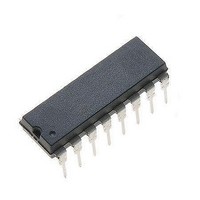E-L5991 STMicroelectronics, E-L5991 Datasheet - Page 11

E-L5991
Manufacturer Part Number
E-L5991
Description
Switching Converters, Regulators & Controllers Prog Current Mode
Manufacturer
STMicroelectronics
Datasheet
1.E-L5991AD13TR.pdf
(23 pages)
Specifications of E-L5991
Output Voltage
5.075 V
Mounting Style
Through Hole
Package / Case
PDIP-16
Lead Free Status / Rohs Status
Lead free / RoHS Compliant
Available stocks
Company
Part Number
Manufacturer
Quantity
Price
Since the system tries restarting each hiccup cy-
cle, there is not any latchoff risk.
"Hiccup" keeps the system in control in case of
short circuits but does not eliminate power com-
ponents overstress during pulse-by-pulse limita-
tion (from A to C). Other external protection cir-
cuits are needed if a better control of overloads is
required.
Pin 8. VCC (Controller Supply). This pin supplies
the signal part of the IC. The device is enabled as
VCC voltage exceeds the start threshold and
works as long as the voltage is above the UVLO
threshold. Otherwise the device is shut down and
the
(<150 A). This is particularly useful for reducing
the consumption of the start-up circuit (in the sim-
plest case, just one resistor), which is one of the
most significant contributions to power losses in
standby.
An internal Zener limits the voltage on VCC to
25V. The IC current consumption increases con-
siderably if this limit is exceeded.
A small film capacitor between this pin and SGND
(pin 12), placed as close as possible to the IC, is
recommended to filter high frequency noise.
Pin 9. VC (Supply of the Power Stage). It supplies
the driver of the external switch and therefore ab-
sorbs a pulsed current. Thus it is recommended to
place a buffer capacitor (towards PGND, pin 11,
as close as possible to the IC) able to sustain
these current pulses and in order to avoid them
inducing disturbances.
This pin can be connected to the buffer capacitor
directly or through a resistor, as shown in fig. 27,
to control separately the turn-on and turn-off
speed of the external switch, typically a Power-
Figure 26. Hiccup mode operation.
FAULT
current
I
I
OUT
SEN
SS
0.5V
5V
consumption
is
extremely low
T
hic
SHORT
MOS. At turn-on the gate resistance is R
turn-off is R
Figure 27. Turn-on and turn-off speeds adjust-
Pin 10. OUT (Driver Output). This pin is the out-
put of the driver stage of the external power
switch. Usually, this will be a PowerMOS, al-
though the driver is powerful enough to drive
BJT’s (1.6A source, 2A sink, peak).
The driver is made up of a totem pole with a high-
side NPN Darlington and a low-side VDMOS, thus
there is no need of an external diode clamp to
prevent voltage from going below ground. An in-
ternal clamp limits the voltage delivered to the
gate at 13V. Thus it is possible to supply the
driver (Pin 9) with higher voltages without any risk
of damage for the gate oxide of the external MOS.
The clamp does not cause any additional in-
crease of power dissipation inside the chip since
the current peak of the gate charge occurs when
the gate voltage is few volts and the clamp is not
active. Besides, no current flows when the gate
voltage is 13V, steady state.
Under UVLO conditions an internal circuit (shown
CONTROL
DRIVE &
L5991
D97IN726
V
CC
13V
8
g
ment.
Rg'
PGND
only.
D98IN986
V
9
11
C
10
OUT
Rg
L5991 - L5991A
7V
Rg(ON)=Rg+Rg'
Rg(OFF)=Rg
g
time
+ R
11/23
g’
, at


















